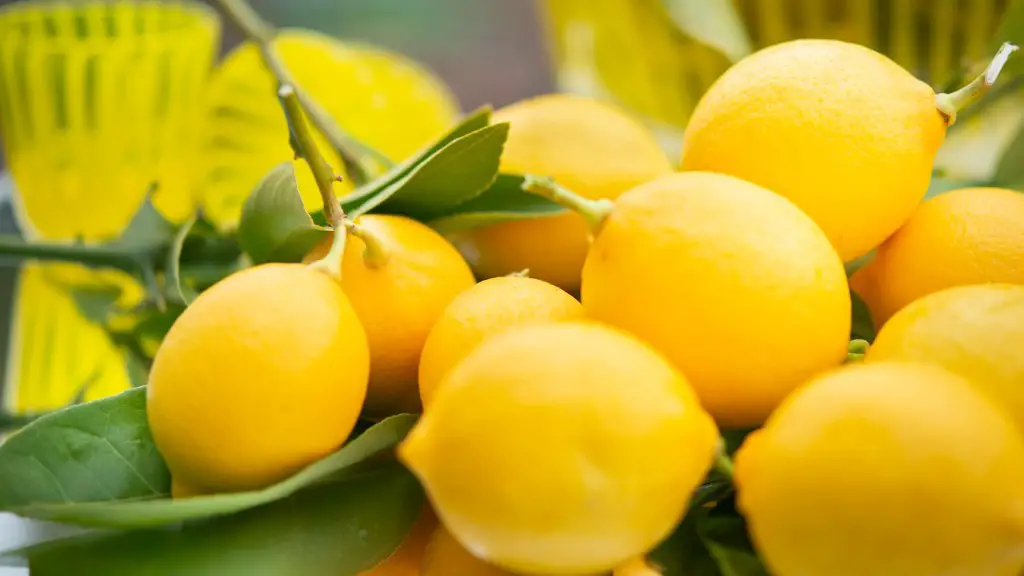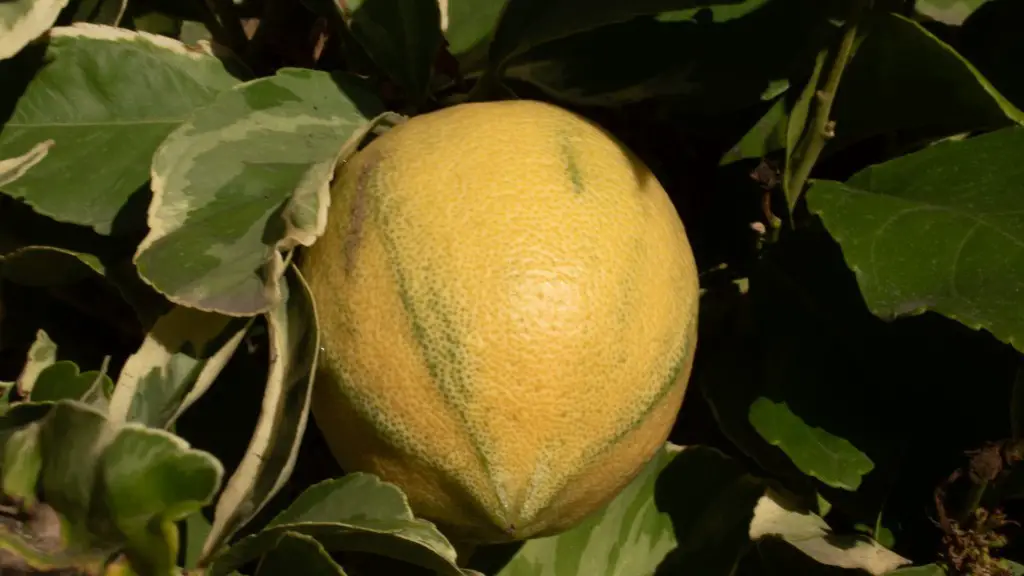Yellowing leaves on a lemon tree often indicate a problem, ranging from minor physiological stresses to more serious issues like disease. Yet, in some cases it may simply be a natural consequence of the tree aging. To determine the cause of yellowing lemon leaves, it is important to look at the overall health of the tree, too. In this article, we’ll take a detailed look at what might be causing yellow lemon tree leaves, and how you can prevent it from happening.
Insect Damage
Insects can damage lemon tree leaves in several ways. For example, aphids and mites will sting and suck the sap of a tree’s leaves, leading to yellowing and curling. Caterpillars and other insects such as leaf miners might also feed on the leaves, leaving as a result yellow spots. If you notice bright yellow patches on the leaves, live insects or insect debris could be the cause.
Improper Care
Improper pruning or over-fertilizing can also cause yellowing of lemon tree leaves. Even when the soil is healthy, over-fertilizing can cause a nutrient imbalance which then affects the tree’s health. Watering incorrectly can also be a factor; if the tree is getting too much or too little water, the leaves may yellow prematurely.
Increased Sun Exposure
Lemon trees should get at least 8 hours of direct sunlight a day. If the tree is exposed to too much sun, the leaves may become yellow and start to drop off. If that’s the case, it’s best to adjust its positioning to limit its exposure to the sun and make sure it receives adequate amounts of shade.
Extremes in Temperature
Extreme temperatures can also lead to yellowing leaves on a lemon tree. If the temperature is too cold or hot, it can cause the lemon tree leaves to yellow or drop off. In some cases, this is part of the tree’s natural season cycle and should correct itself as the weather changes, but if the yellowing persists, it may indicate an underlying problem.
Pathogenic Disease
Fungal or bacterial diseases can cause certain areas of the lemon tree leaves to turn a dull yellow or even brown. Fungal diseases such as Ascochyta blight can cause yellow spots on the leaves which then turn brown and black. With bacterial infections, the leaves will often have yellow, curling margins. The best way to prevent this from happening is to keep the tree healthy by following proper care techniques.
Nutrient Deficiency
Nutrient deficiencies are one of the most common causes of yellowing lemon tree leaves. Lemon trees require certain essential nutrients such as nitrogen, phosphorus, and potassium in order to remain healthy. If the soil is lacking any of these nutrients, the leaves will often turn yellow as a result. To prevent this, regularly test the soil and replenish any depleted nutrients.
Pests and Diseases
Many pests can affect lemon trees, including aphids, mealybugs, whiteflies, and thrips. These pests feed on the tree’s leaves and branches, causing them to yellow and drop off. Diseases caused by fungi, bacteria, and viruses can also cause yellowing and premature death of lemon tree leaves. Fungal root diseases can cause the leaves to turn yellow and curl up, while bacterial diseases like citrus canker cause yellow and orange spots on the leaves.
Irregular Watering Patterns
Lack of proper watering can also lead to yellowing of lemon tree leaves. You should water your tree deeply and consistently in order to ensure optimum health. If the ground is allowed to dry out too much between waterings, the lemon tree can become stressed, leading to yellow or wilted leaves.
Incorrect Pruning
Pruning the lemon tree incorrectly can cause yellowing of the leaves. Over-pruning can leave the tree stressed and can make it more susceptible to pests and disease. Pruning should be done in moderation and during the right time of the year to ensure the health of the tree.
Fertilizer Overload
Applying too much fertilizer is also a common mistake when it comes to lemon trees. Over-fertilizing can cause a nutrient imbalance, leading to yellow or brown leaves. It is best to use the recommended amount of fertilizer, and if the soil is already healthy, you may not need to use any at all.
Lack of Trace Elements
Lemon trees also require certain trace elements in order to remain healthy. If the soil doesn’t contain these trace elements, the tree may become stressed and start to turn yellow. It is important to test the soil and replenish any needed nutrients to ensure optimum health.
Environmental Toxins
Environmental toxins such as herbicides and pesticides can also affect lemon trees. These substances can damage the leaves, leading to yellowing and premature death. If you suspect that toxins are the cause of yellowing leaves, you can use natural pest control measures such as introducing beneficial insects.


